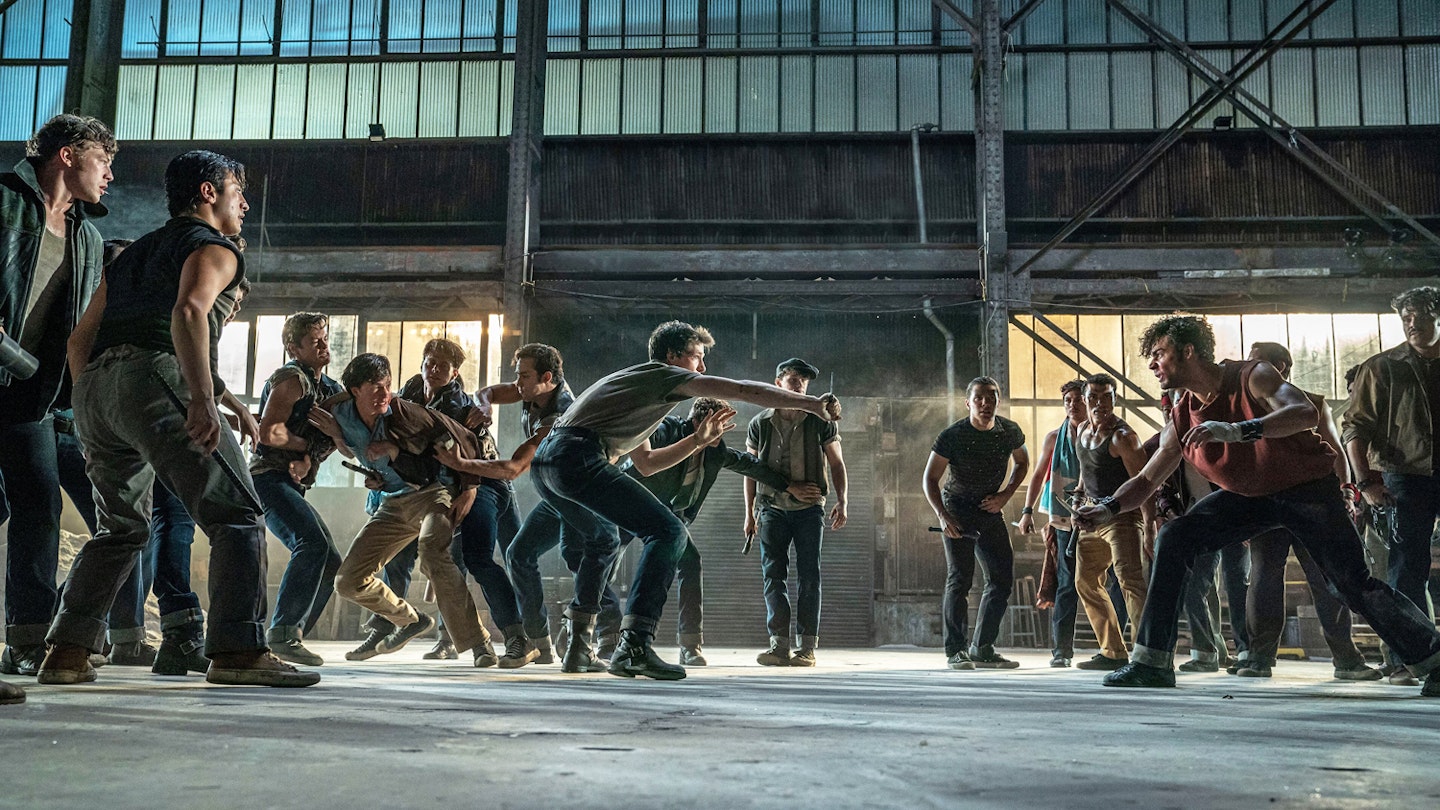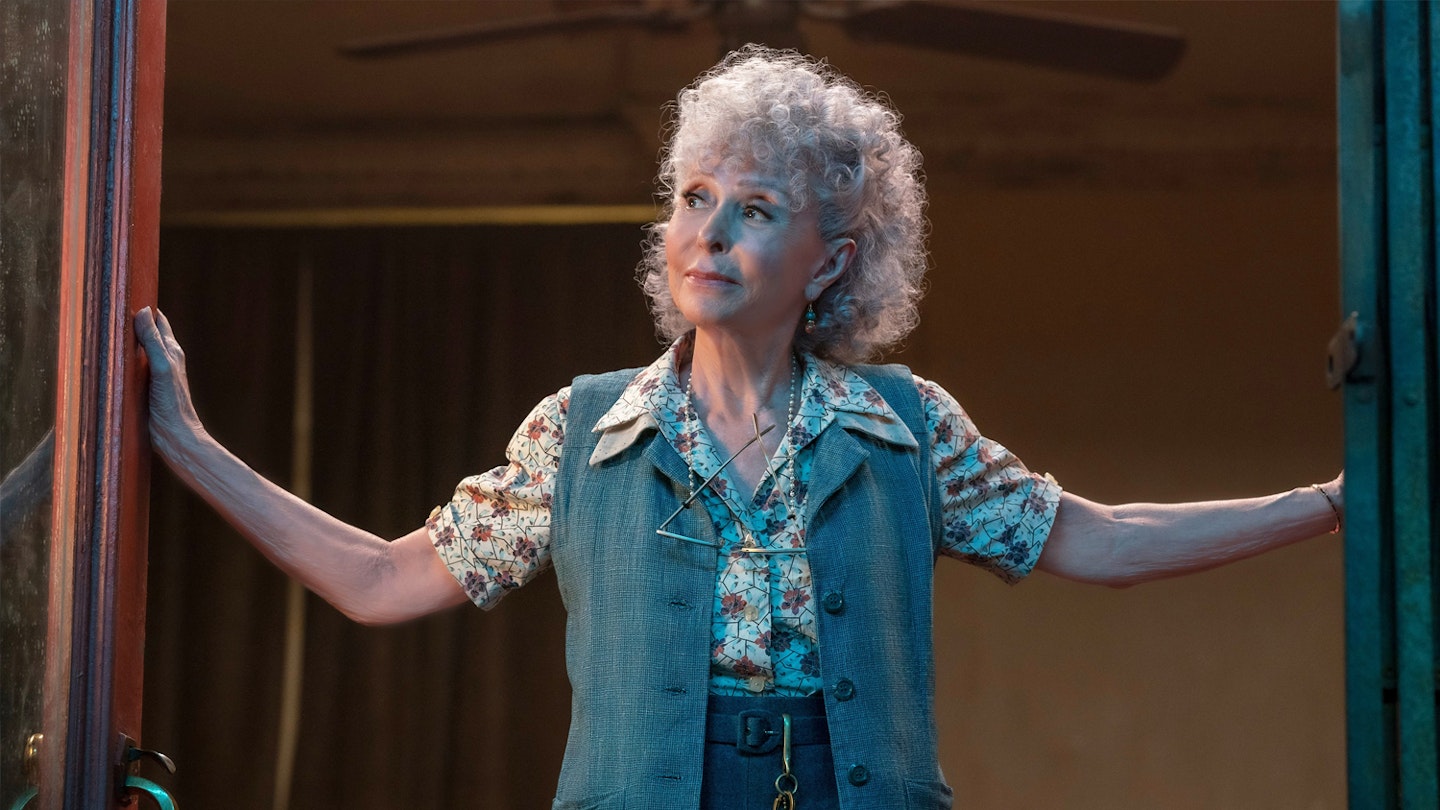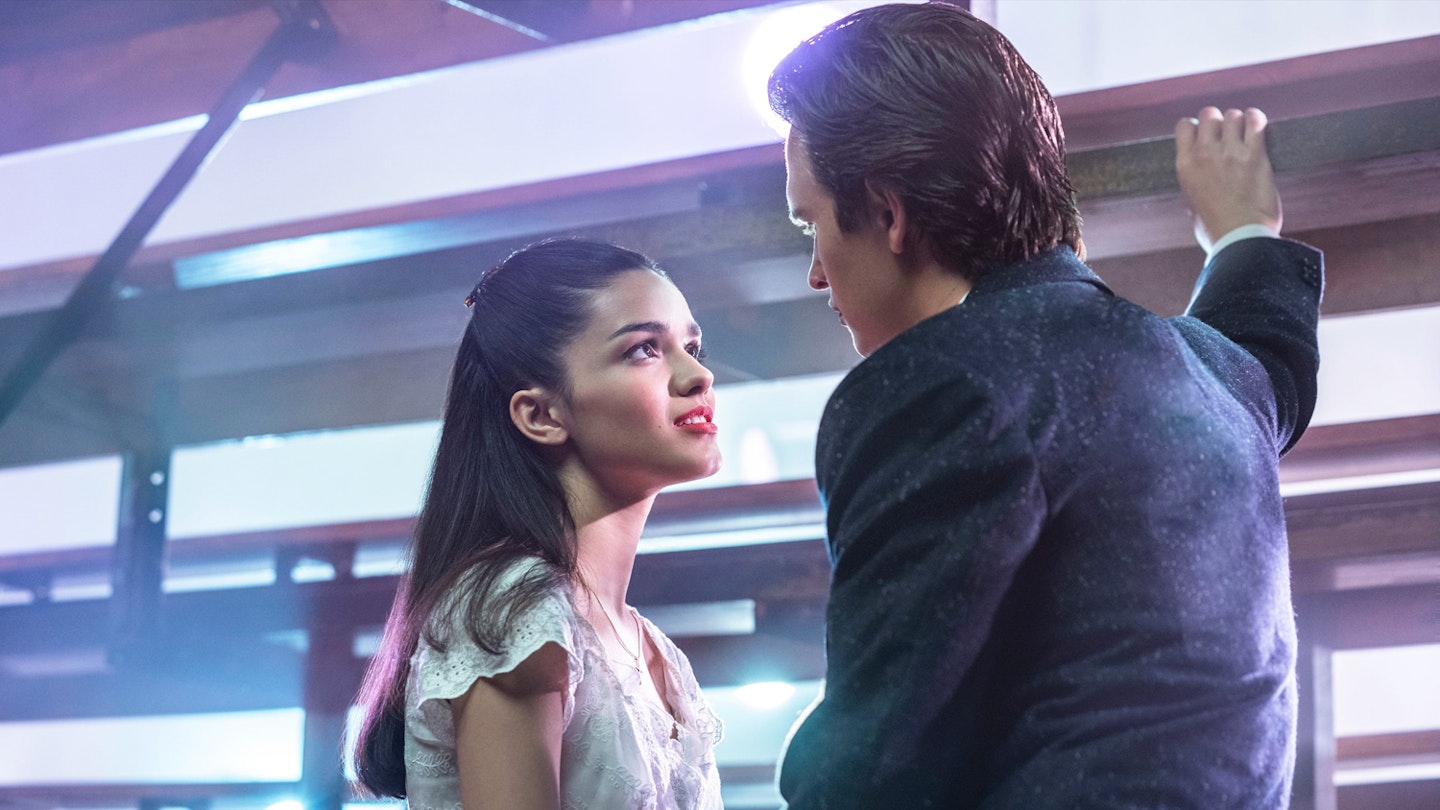West Side Story is Steven Spielberg’s best film in years. It’s a film with a huge mountain to climb – a revered 1957 musical forged by Leonard Bernstein (composer), Stephen Sondheim (lyricist), Jerome Robbins (choreographer), Arthur Laurents (writer), already adapted into a classic 1961 Oscar winner – but clears it with the grace and ease of a Jet pirouetting around New York. It’s one of recent cinema’s biggest crimes that it didn’t find its audience on the big screen. Box office brainiacs cite the reluctance of its expected core demo – older audiences, women – to return to multiplexes during the re-emergence of Covid as responsible for its lower-than-expected theatrical gross. In truth, despite stellar reviews and strong word of mouth, there has been so much sleeping on West Side Story, it’s generated more Zzzzs than Zorro. But, as it bows on Disney+, it seems – like the Force some thirty-odd years after the Battle of Yavin – there has been an awakening. The world is waking up to the indisputable fact that West Side Story is a stone-cold masterpiece.
If you want proof of the resurgence, on 26 February, filmmaker Shane Anderson tweeted the bravura one-take tracking shot that sees the Sharks, a Puerto Rican gang in ‘50s New York, enter a social mixer at a gym where their American rivals, the Jets, are burning up the dance floor. ‘This shot from West Side Story is fucking insane,’ wrote Anderson, the clip now viewed 3.3 million times and retweeted by the likes of Edgar Wright and Guillermo del Toro, who wrote: “Baffling, virtuoso- but one of so, so many shots that make the camera "dance" with each musical number.”
Covering the action in one sweeping take – from the Sharks swaggering into the hall, to the Jets strutting their stuff, to the Sharks jostling for position on the side-lines – made perfect sense to the director. “It was going to allow you to appreciate the dancing that was happening right in front of you, as opposed to snapping your attention from one side of the dance floor to the other,” Spielberg told Empire in October, before the film’s release. “It was also a great way to show the fact that the Jets had completely occupied that gym leaving no room for anyone to dance. As the Sharks enter for the first time, it kind of showed where the lines of demarcation were being set.” The significance of the shot wasn’t lost on Rachel Zegler either – a debutante actor playing debutante Maria, a Shark girl who falls for ex-Jet boy Tony (Ansel Elgort). “It's a very, very Spielberg-esque shot,” she says. “I’m in a couple of oners and would tease him because he knows there's these video essays online. Every time I'd say it, he'd be like ‘I know! I know!’”

The many colours of Spielberg’s genius abound throughout West Side Story. As you’d expect, the imagery – in cahoots with director of photography Janusz Kaminski – is off the chain; the opening shot sees the camera moving over rubble, rising over a fence to survey the creation of the Lincoln Centre before landing on the Jets emerging from a hatch, the shot neatly setting up that the turf the gangs are fighting for is already a hollowed-out warzone; Tony singing ‘Maria’ standing in a puddle reflecting a kaleidoscope of lights; the top shot of the gangs, all long dagger-y shadows, entering the rumble. There are grace-notes a-plenty — a Jet pulled away for a fight just before he can light his girl’s cigarette; a little girl opening a window as Tony sings ‘Maria’ in a tenement block filled with a million Marias — and stunning staging. Note the comedy of Tony trying to scale the fire escape during ‘Tonight’, or the powerful simplicity of the final procession.
This is a filmmaker in complete control of his medium, a perfect hybrid of stylisation and reality.
There’s an energy and engagement in Spielberg’s work here that has been absent in both his recent crowd-pleasers and historical dramas. From ‘Cool’, parlayed into a tense battle over a gun, to the multi-faceted montage of ‘Quintet’ as all the characters contemplate battle, to the full-on glee of ‘I Feel Pretty’ staged in multiple mirrors like a golden age musical, it’s a filmmaker in complete control of his medium, a perfect hybrid of stylisation and reality.
Spielberg has described West Side Story as a street musical, and it’s a film embedded in New York in general — the Jets sing their signature song on bustling streets rather than an empty playground like the Robert Wise-Jerome Robbins version — and in the Puerto Rican community in particular. In practically every other version, ‘I Feel Pretty’ is staged in a wedding shop. Here it takes place with Maria working the night cleaning crew at a huge department store. “I do think it's a great commentary on the realities for Latinas in that time period and Latinas now,” says Zegler. “It wasn't all just wearing pretty dresses and dancing through the streets. When the sun goes down, we go and clean up the white people’s stores. That's a really big statement we made.”

From populating the Sharks with authentic Latino actors (no colourism here) to the decision not to subtitle swathes of Spanish dialogue (thus not ‘othering’ the Puerto Rican characters), it’s a tactful, tasteful corrective to the less sensitive portrayal in the ’61 film. It reaches its zenith in the ‘America’ number, relocated from a rooftop to become an uplifting romp through the San Juan Hill neighbourhood, rich in character beats – the most joyous five minutes of film in 2021. “The dance language for Anita is more celebratory and confident and infectious to the community around her,” explains choreographer Justin Peck. “Whereas Bernardo’s is a bit more tense, physical. He's a boxer in this version of West Side Story. So, there's definitely an element of that present in the way he moves. When words fail in their argument with one another, we have this whole other form of expression that twists off into dance.”
Overall, the impression you get is of a summit meeting of newly-minted triple-threats.
It’s a sequence at once perfectly controlled and infectiously freewheeling, full of lovely detail (listen out for the heavyweight punctuation on Anita’s punches) and huge sweep. In one of the film’s many deft transitions, the action cuts to Tony learning Spanish from Valentina (Rita Moreno, Anita in the ’61 film). After watching ‘America’, who doesn’t want to be part of that explosion of colour and joy?
As much as it is about the representation of the real Latino experience, it is also a representation of the strength and depth of young theatre talent. Iris Menas’ attitude-filled Anybodys, normally depicted as a tomboy, is transposed to a trans-masculine character, lending the invisibility of gender nonconformity to a character who slips in and out of the shadows. Josh Andrés Rivera as Chino beautifully etches arguably the film’s biggest character arc, from shy suitor to Maria — watch his klutz-y attempts at dancing in the gym — to a dark destroyer swearing more vengeance than Batman. David Alvarez as Bernardo, Shark leader and over-protective brother to Maria, is a muscular yet sensitive presence, bursting with patriotic pride and the charisma of a leader; a phenomenal mover, he’s the unsung hero of the WSS ensemble. Mike Faist, as Jets leader Riff, is a wiry, edgy presence who shoots from the hip. It’s a performance of disaffected youth (and disenfranchised Americans) for the ages. Overall, the impression you get is of a summit meeting of newly-minted triple-threats.

But the heart and soul of West Side Story belongs to two women. Ariana DeBose’s Anita is the film’s beating heart, at once a whirling dervish on the dancefloor (or street corner) and a voice of sanity, endlessly puncturing Bernardo’s machismo. But as the story darkens, she’s got the dramatic chops too — it’s the hardest heart who isn’t crying as she walks away from a police station (this West Side Story is that rare musical that includes a morgue identification scene).
She is matched by Rachel Zegler, who gives the film soul as Maria, often characterised as a dull-as-dishwater ingenue. Zegler imbues Maria’s wide-eyed openness with delicacy and spirit — listen to the cheeky rasp she gives the “Miss America” line in ‘I Feel Pretty’ — before tapping into a deep-seated, wounded anger as her world collapses. When the couple share the screen for the barnstorming ‘A Boy Like That/I Have A Love’ duet, it’s electric. Let’s hope that the film picks up enough groundswell to spark a sequel: Maria and Anita Go To Vista Del Mar. These two women definitely need a break.
Having realised his career-long dream of making a musical — don’t forget Hook started out as a song-a-thon — Spielberg is rumoured to be actively looking for a Western to make. He will have to go some way to beat his latest genre-reinvention. A valentine to musicals, diversity, love and love stories, in the words of ‘Something’s Comin’’, Spielberg caught “the moon, one handed catch.” And that deserves to be seen, be it on big screen or small.
West Side Story is streaming now on Disney+
